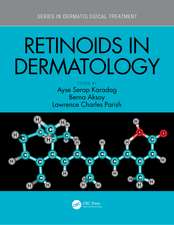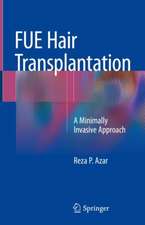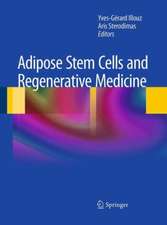Asian Septorhinoplasty: Conundrums and Solutions
Autor Eun-Sang Dhong, Min-Wha Naen Limba Engleză Paperback – 14 mai 2022
| Toate formatele și edițiile | Preț | Express |
|---|---|---|
| Paperback (1) | 715.52 lei 38-44 zile | |
| Springer Nature Singapore – 14 mai 2022 | 715.52 lei 38-44 zile | |
| Hardback (1) | 972.31 lei 38-44 zile | |
| Springer Nature Singapore – 14 mai 2021 | 972.31 lei 38-44 zile |
Preț: 715.52 lei
Preț vechi: 753.19 lei
-5% Nou
Puncte Express: 1073
Preț estimativ în valută:
136.91€ • 142.95$ • 113.31£
136.91€ • 142.95$ • 113.31£
Carte tipărită la comandă
Livrare economică 01-07 aprilie
Preluare comenzi: 021 569.72.76
Specificații
ISBN-13: 9789811605444
ISBN-10: 9811605440
Pagini: 189
Ilustrații: X, 189 p. 188 illus., 173 illus. in color.
Dimensiuni: 178 x 254 mm
Greutate: 0.48 kg
Ediția:1st ed. 2021
Editura: Springer Nature Singapore
Colecția Springer
Locul publicării:Singapore, Singapore
ISBN-10: 9811605440
Pagini: 189
Ilustrații: X, 189 p. 188 illus., 173 illus. in color.
Dimensiuni: 178 x 254 mm
Greutate: 0.48 kg
Ediția:1st ed. 2021
Editura: Springer Nature Singapore
Colecția Springer
Locul publicării:Singapore, Singapore
Cuprins
1 The longevity of alloplastic implants.- 2 Surgical site infection (SSI) vs. Late-onset inflammation (LOI).- 3 Nasal Swab culture: the preparation for the safe surgery.- 4 Medpor: the hurdle of secondary rhinoplasty. – 5 Nasal obstruction in Asian rhinoplasty.- 6 The various preparations of autologous materials.- 7 The resorption: the hurdle for autogenous based Asian rhinoplasty.- 8 Controlling Asian Tip: Tip defining point & supratip break.- 9 Controlling Asian Tip: Facet & supra-alar groove.- 10 Controlling Asian Tip: infra-tip lobule & ACR.- 11 Correction of the short secondary nose: Dissection & the framework reconstruction. 12 Secondary septal surgery.- 13 Think inside the box: Absorbable plate, IHCC and the stem cells.- 14 Pus draining status after complicated septorhinoplasty: when to do the secondary rhinoplasty?.- 15 Nasal tip necrosis: the midline forehead flap should be the last choice.- 16 When you encounter very small septal cartilage.- 17 Hypoplastic lower⅔ nose: camouflage vs. reconstruct the framework.
Notă biografică
Eun Sang Dhong, MD
Professor, Department of Plastic and Reconstructive Surgery
Guro Hospital, College of Medicine, Korea University
Min Wha Na, MD
Chief of Yerom Plastic Surgery Center
Textul de pe ultima copertă
This book explains the challenging problems often encountered by surgeons when performing septorhinoplasty and secondary rhinoplasty in Asian patients and identifies solutions based on the best available evidence. The opening chapter discusses issues relating to the longevity of alloplastic implants. Various dilemmas in Asian septorhinoplasty are then addressed, including in relation to resorption of autogenous grafts and various aspects of technique. The aim here is to enable surgeons to achieve consistent high-end results. In the case of secondary rhinoplasty, the coverage includes conundrums relating to the distinction between infection and delayed inflammation, the choice of graft materials, correction of the contracted nose, and key decisions, including in patients in whom the septum has been previously resected. A separate chapter provides guidance on the approach to specific difficult cases encountered in Asian populations, including tip deformity,columellar necrosis, nostril asymmetry, and recurrent nasal deviation. Finally, advice is given on best practice in the use of alloplastic materials.
Caracteristici
Covers a range of frequently encountered conundrums in depth Identifies solutions that help achieve excellent results Offers clear guidance on the use of alloplastic materials








